A visit to Cape Vidal
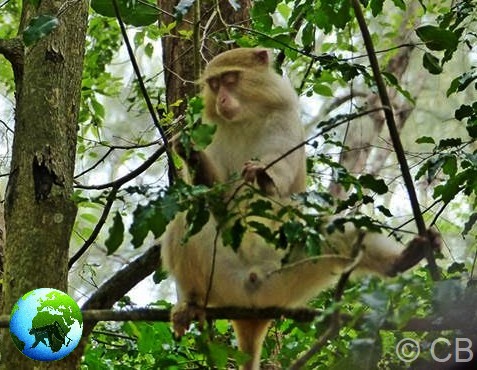
During February, 2019, we took a break from our usual forest routine and headed off to one of Cape Vidal’s beach cabins for a couple of days. For those who don’t know, this bush and beach destination is set within the St Lucia Marine Reserve and is surrounded by the wetlands and coastal forest of iSimangaliso Wetland Park.
As we unpacked our luggage, a couple of vervet monkeys arrived, heading towards a cabin across the road where two children ate fruit on the balcony. Glancing around quickly, one of them bent over the rail, dropping an orange onto the ground.
The monkeys retrieved it.
Emerging from within the cabin, a man glared at the monkeys and screamed, then grabbed a taser and pressed the button.
A sharp sound from the stun gun sliced the air.
Monkeys scattered.
Whales, endangered turtles, dolphins, rhino, elephant, hippo and leopard are some of the attractions that Cape Vidal has to offer, and while we were honored with the presence of some of these animals, my main purpose for the visit was to see the subspecies of samango monkey (Cercopithecus albogularis erythrarcus) that does not inhabit our study area. I was also eager to see a “blonde” samango monkey (more on that later).
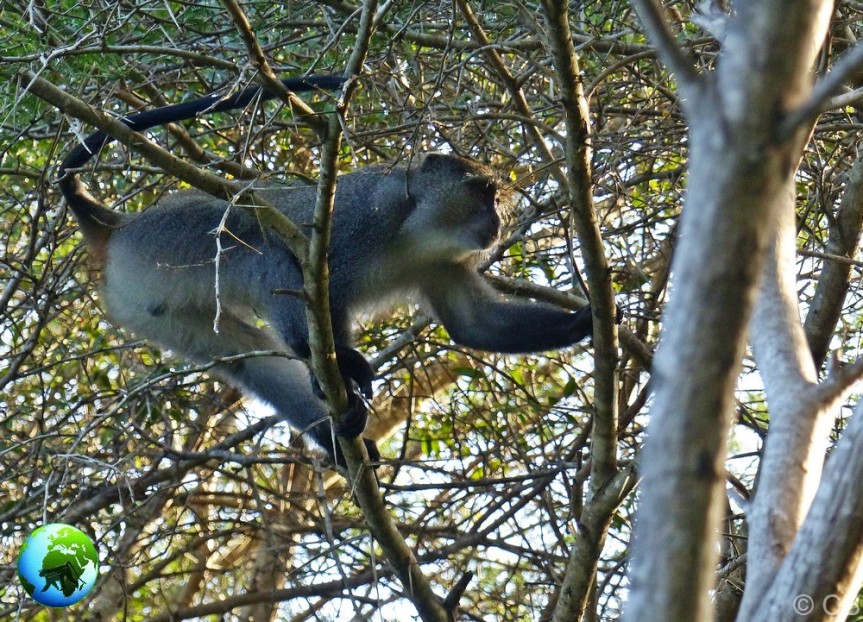
That afternoon an adult male samango monkey arrived, sitting close to the cabins. After many months of observing the midlands samango subspecies (Cercopithecus albogularis labiatus), the stark morphological differences seemed particularly striking.
I first noticed the tail; the upper half of C a erythrarcus tail is dark in comparison to the striking half- white tail of C a labiatus. Next I noticed the size; C a erythrarcus is larger and has various yellow tones in the pelage whereas C a labiatus doesn’t.
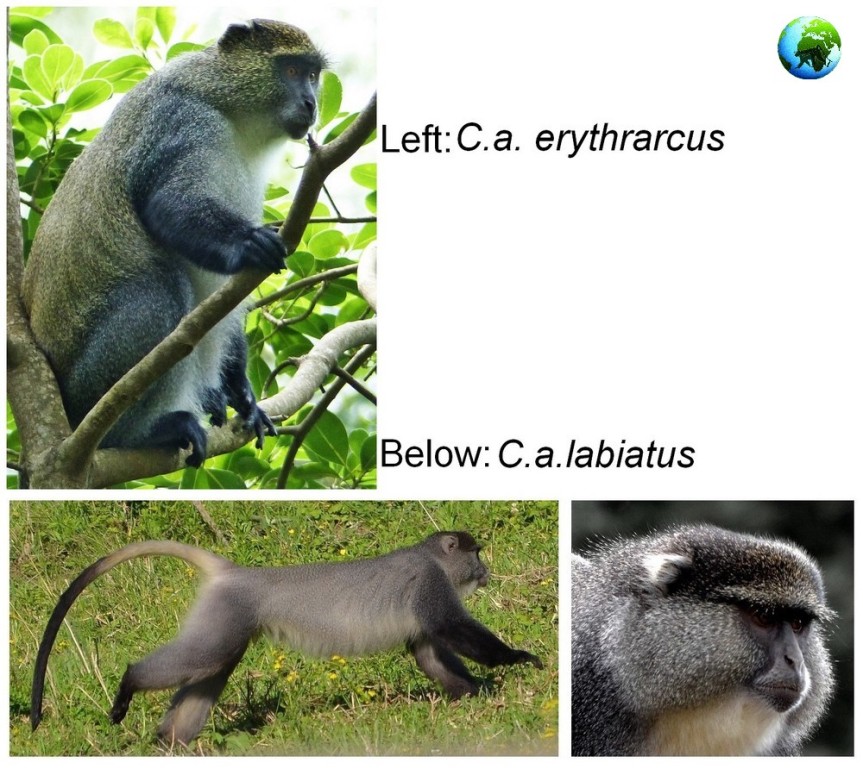
Over the next couple of days, it became increasingly apparent that both vervet monkeys and samangos were brought together over a common interest: human food sources. This preoccupation with obtaining human food seemed to affect the behavior within the troops as well as inter-troop behavior. Mothers with babies clinging to their bellies hung around, watching. Waiting for a glimpse of human food and in doing so, wasted hours of time that would be better served foraging for wild food.
Single males threatened each other from a distance; lifting eyebrows, bobbing or baring dagger-like teeth. Sometimes, mothers would abandon their infants in an attempt to increase their chances of making a speedy exit from a cabin inhabited by hostile humans.
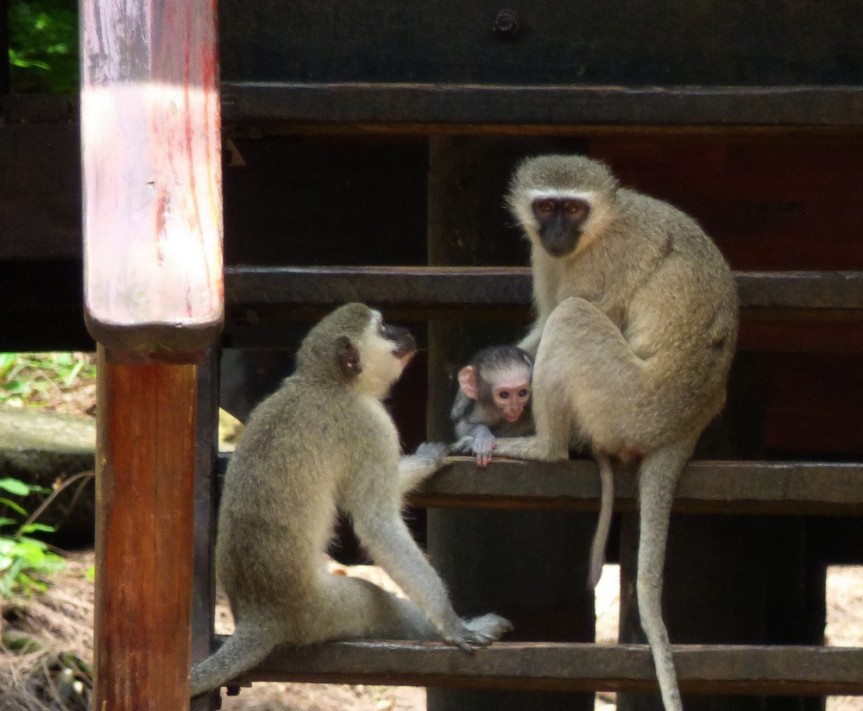
Reflecting on the positive behaviour between samangos and vervets that we had witnessed in the Dargle area, while considering that we had little time to objectively observe behavior in the moment, I was nevertheless saddened to see the extent to which humans are influencing troop behavior at Cape Vidal.
An adult female blonde samango monkey graced us with her presence on the second day, spending a short time right in front of the cabin.
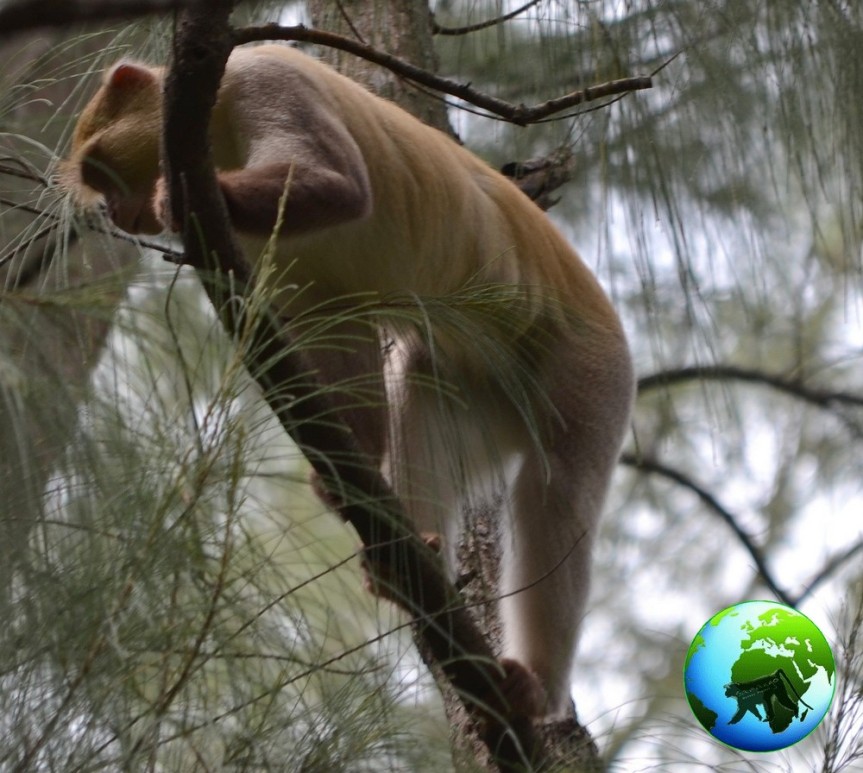
Blonde Samango Monkeys of Cape Vidal
The blonde samangos of Cape Vidal were first brought to my attention when reading Thomas M Butynski and Yvonne A de Jong’s 2009 paper: Three Sykes’s Monkey Cercopithecus mitis × Vervet Monkey Chlorocebus pygerythrus Hybrids in Kenya, 196.6.119.155, a paper that documents the existence of three hybrids (vervet monkey x sykes monkey) in Kenya.
While some scientists have suggested that these blonde samangos are samango monkey X vervet monkey hybrids, Butynski and de Jong suggest that they are more likely to be erythristic or partially albino.
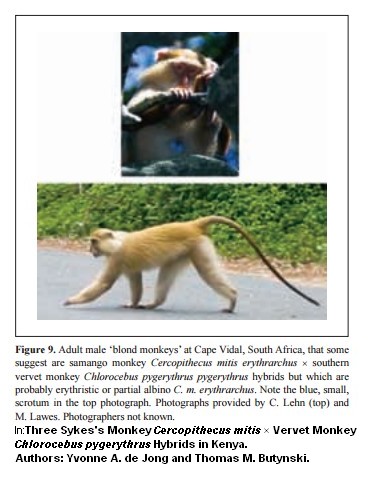
Given our research to date on the alliances formed by vervet monkeys and samango monkeys in the midlands, and noting this phenomenon elsewhere, the feasibility of hybridisation between these two intergeneric species that are remarkably different as far as the amount of chromosomes they have, their behaviour and the different ecological niches they inhabit is never far from my mind.
Hybridisation in Wild Primates
The study of natural hybridisation in wild primates is relatively new in comparison to those on fish, birds or mammals. Studies have shown that around ten percent of primates hybridise (Arnold ML, Meyer A. 2006), supporting the growing consensus that this phenomenon is an important evolutionary mechanism driving speciation processes (Zinner. D, Arnold ML, Roos C. 2011). Evidence proving that natural hybridisation in mammals is not a marginal phenomenon has accumulated.
In primates, hybridization has occurred mainly between subspecies and species, but has also been detected between genera (for example between the vervet monkey and sykes monkey as recorded in de Jong and Butynski’s paper ) and even in the human lineage as suggested here: Early European may have had Neanderthal great-great-grandparent half Neanderthal, half Denisovan female who died around 90,000 years ago (Mum’s a Neanderthal, Dad’s a Denisovan: First discovery of an ancient-human hybrid – Genetic analysis uncovers a direct descendant of two different groups of early humans).
References:
Arnold ML, Meyer A, 2006. Natural Hybridisation in Primates: One Evolutionary Mechanism.
Butynski M, de Jong Y A,’s 2009. Three Sykes’s Monkey Cercopithecus mitis × Vervet Monkey Chlorocebus pygerythrus Hybrids in Kenya.
Zinner D, Roos C, Arnold ML. 2011. The Strange Blood: Natural Hybridisation in Primates.
On Hybridisation in Primates: Macroevolution by Eugene M McCarthy (PHD genetics).

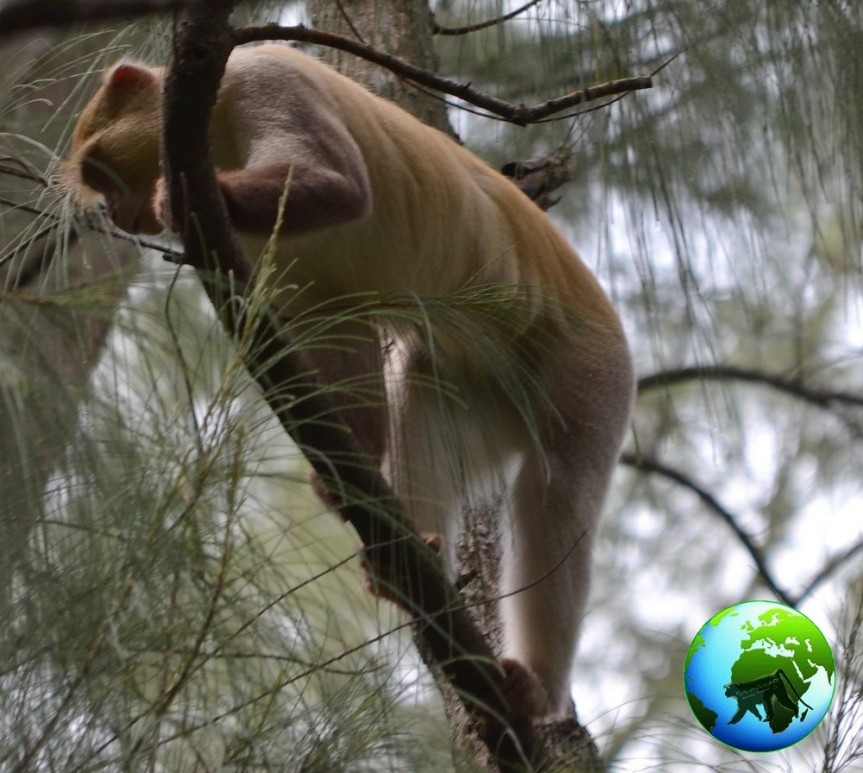
Interesting perspective, and I haven’t ever before considered the possibility that Cape Vidal’s “golden” samangos might be hybrids so thanks for the food for thought. My immediate inclination however is also that they’re more likely a colour aberration through recessive genes circulating through the population or due to albinism / leucism, but I am open to proof otherwise!
LikeLiked by 1 person
I agree with that and with de Jong and Butynski’s suggestion that they are erythristic. The blonde samango pictured in their paper with a blue scrotum may be one reason why some have suggested the blonde samangos are hybrids.
LikeLiked by 1 person